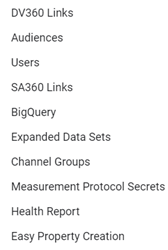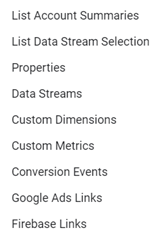


Google Analytics Utilities - how to check your settings more effectively in your GA4 account
In a large organisation like Avon, dozens of Google Analytics 4 services are used simultaneously to monitor users across websites, mobile apps and sales platforms. Effectively managing such a large portfolio of tools requires equal attention to data quality, proper system configuration and security of stored information. How do you ensure that you are working effectively with this tool?
Challenges
Manually checking and updating the GA4 configuration was time consuming and error prone. Monitoring the health of all services on a daily basis and making the necessary improvements required over 40 hours of specialist work every month. The most time-consuming tasks were:
- Adding, removing and changing audience group settings for remarketing activities.
- Managing dimensions and custom metrics, including changing ranges, names, descriptions and parameters.
- Maintaining the accuracy of recorded conversions, which included modifying events and creating new conversions.
- Setting up custom marketing channels groupings and changing the rules of existing groups.
- Creating new services to meet the needs of different company departments.
- Managing users with access to data. Deleting inactive aliases, adding new ones and modifying the main and secondary access levels to the service.
- Combining GA4 with other tools such as Google Ads, DV360, Big Query.
Given the complexity of the activities involved, we were looking for a turnkey solution that would automate all the tasks without involving IT, while being a valuable time saver for the specialists.


Implementation
We decided to implement Google Analytics Utilities as a solution for collecting, managing and monitoring data in Google Analytics 4. After joining the Google group and copying the spreadsheet template, we were immediately able to start using various functionalities available in that tool.


Fig. 1. List of tool functionalities
In order to carry out the tasks effectively, the client’s team was trained in the use of the tool. The training covered the use of basic functions and explained the mechanics of Google Analytics Utilities.

Fig. 2: Structure of the Google Analytics Utilities template for modifying conversion event settings.

Figure 3: Structure of the Google Analytics Utilities template for modifying the access settings.
Results
- After implementing Google Analytics Utilities and integrating it into the analytics process, the time required to perform the same tasks was reduced by up to 70% in some months (from 40 to 12 hours per month). This enabled a more efficient use of resources.
- The automation feature enabled the client to fine-tune the settings, resulting in more effective monitoring and optimisation of GA4 configurations.
- Audit settings helped to quickly identify and correct errors in the GA4 configuration. This in turn improved data accuracy and operational efficiency.

